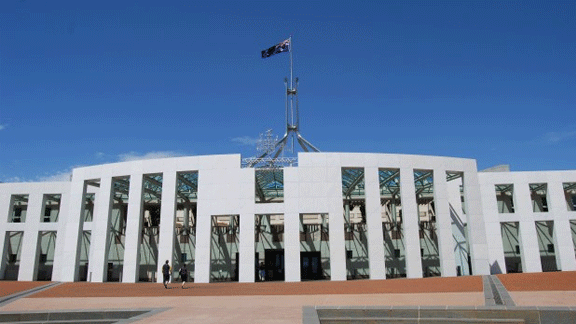Politicians push an ugly racist agenda

The 2013 Scanlon Foundation survey, “Mapping social cohesion”, released by Monash University in March, paints a depressing picture of racism in Australia.
As in earlier surveys, there was almost no reference to Indigenous issues. Despite the continuity of this form of racism over more than two centuries, it is so normalised as to go largely unremarked.
On the other hand, the survey found that attitudes to asylum seekers are becoming increasingly negative – as are the experiences of recent arrivals.
Scanlon surveys have been conducted since 2007. The latest reports that the level of acceptance of immigration and diversity is down by almost one-third since 2007.
Fewer than one in five respondents agreed that asylum seekers arriving by boat should be eligible for permanent settlement. Of the others, 33 percent supported turning back the boats, 7 percentage points higher than the previous year.
Further, 41 percent of recent immigrants of non-English speaking background have experienced discrimination on the basis of their “skin colour, ethnic origin or religion” over the last 12 months. Ranking attributes of Australian society, immigrants put the image of Australians as “kind, caring and friendly people” last.
What causes it?
It is not just that the survey’s statistics are alarming. The study’s attempts to explain why attitudes have shifted are next to useless. Racism is clearly not a natural or static phenomenon. The authors argue that “discrimination stems from the actions of a minority … some 10 percent of the population harbours strong negative views towards cultural diversity.”
This does nothing to explain what generates this racism, let alone indicate how it can be resisted. Fortunately, much that helps provide an explanation of who is to blame for the rise in racism is contained in the report – even if it is buried.
There is now a large measure of acceptance of groups that once were stigmatised. “Continental Europeans, who were the target of hostility in the 1950s and 1960s, and immigrants from Asia whose entry to Australia was much questioned in the 1980s, are now seen in a positive or neutral light by a large majority of Australians.”
In the 21st century, by far the highest level of negative feeling, at close to 25 percent, is towards immigrants from countries in the Middle East. As the report points out, this region is “identified in Australian public discussion as [a main centre] of Muslim populations”.
The 10 percent who hold negative views of cultural diversity didn’t just get bored with their old targets. The targets were shifted by the broader agenda of Western ruling classes.
Changing target
When notorious racist Pauline Hanson made her inaugural speech in parliament in 1996, she didn’t mention Muslims. At that time, Asians were the target. In the intervening period, imperialist wars in the Middle East and the associated war on terror required a concerted effort of justification.
Politicians and the capitalist press in country after country began a campaign to demonise Muslims and to generate support for the invasion and occupation of Afghanistan in 2001 and Iraq in 2003.
The number of asylum seekers arriving by boat from the Middle East and Afghanistan jumped markedly from 1999. The anti-Muslim hysteria surrounding the war was used by the Howard government to justify one of the most abominable anti-refugee regimes in the Western world.
After years of campaigning – resistance from both within the concentration camps and supporters on the outside – the hysteria subsided. At the time of the 2007 federal election, neither Howard nor Rudd could see any mileage in trying to whip up anti-refugee sentiment.
A Nielsen poll in 2009 asked, “Should asylum seekers arriving by boat have more legal protection, less legal protection or the same legal protection as asylum seekers arriving by plane?” The majority (69 percent) agreed that regardless of the mode of transport, people should be treated the same. Only 19 percent thought they should be given less protection.
But beginning with Kevin Rudd’s attempt to repel asylum seekers from Australia to Indonesia in late 2009, there has been an ongoing front-page newspaper fear campaign about the issue. Ever more vicious policies to halt arrivals have been adopted by both the Labor government and now the Liberals.
In 2010, there was a heightened level of debate in parliament and the media over immigration and the desirable future population for Australia. The 2010 Scanlon Foundation survey found a marked rise in those who thought the immigration intake was “too high”: up from 37 percent to 47 percent over the course of a year.
In August 2012 the Rudd government reintroduced offshore processing in New Guinea and Nauru, and in July 2013 announced a change of policy that denied the right of settlement to any asylum seeker reaching Australia by boat. It is within this charged environment that popular attitudes have hardened.
The racism documented in the latest Scanlon survey is quite clearly stoked from the top.